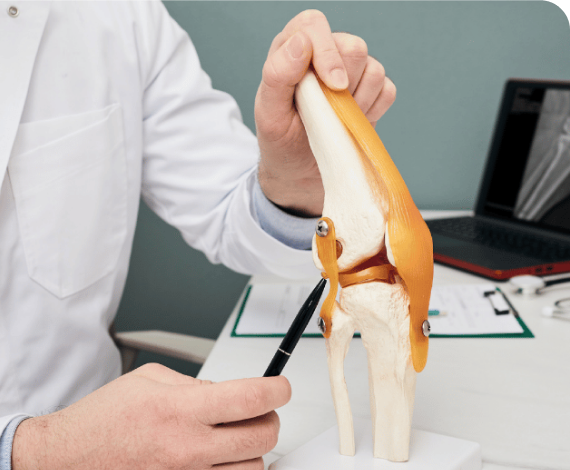Regenerative orthopedics is transforming the way joint degeneration is treated by focusing on healing rather than just symptom management. This approach aims to stimulate the body’s natural repair processes and restore joint function. For individuals seeking alternatives to surgery or long-term medication, regenerative orthopedics offers a path toward lasting relief and improved mobility.
How Regenerative Orthopedics Works
Regenerative orthopedics harnesses the body’s natural healing processes to repair damaged tissues and promote tissue regeneration. The approach uses biological materials from the patient’s own body to stimulate tissue regeneration. These materials contain growth factors and specialized cells that promote healing and tissue repair.
The treatment process begins with extracting healing materials from the patient. Medical professionals then prepare these materials in a laboratory setting to concentrate the beneficial components. Once prepared, the regenerative materials are injected directly into the damaged tissue area.
The body responds to these injections by increasing blood flow and cellular activity in the treated area. This enhanced biological activity helps repair damaged cartilage, tendons, and other joint structures. The healing process often takes several weeks to months as new tissue develops.
Conditions Treated With Regenerative Orthopedics
Regenerative therapy addresses various joint and soft tissue conditions that cause pain and limit movement. Arthritis is one of the common conditions treated with these advanced orthopedic solutions. The therapy helps reduce inflammation and promotes cartilage repair in arthritic joints.
Tendonitis and bursitis also respond well to regenerative treatments. These conditions involve inflammation of tendons and fluid-filled sacs around joints. Regenerative therapy helps reduce inflammation while promoting tissue healing. Other conditions that benefit from regenerative orthopedics include muscle strains, ligament injuries, and certain types of fractures.
Types of Regenerative Orthopedic Therapies
Platelet-rich plasma therapy is one of the widely used regenerative treatments. This therapy uses the patient’s own blood, which is processed to concentrate platelets containing growth factors. The concentrated platelets are then injected into the damaged tissue to stimulate the healing process.
Lipoaspirate therapy is another form of regenerative treatment. This approach extracts specialized cells called pericytes from the patient’s fat tissue. These cells act as signaling molecules that recruit healing cells to damaged areas. The prepared cells are then injected into the injured tissue. Both treatments use the patient’s own biological materials, which reduces the risk of rejection or adverse reactions. The procedures are typically performed in an outpatient setting with minimal recovery time required.
Benefits of Regenerative Orthopedics
Regenerative treatments offer numerous advantages over traditional treatment methods, making it a promising option for many patients. Here are some key benefits of this innovative approach:
- Reduced Risk of Adverse Reactions: By using the patient’s own biological materials, regenerative therapies minimize the likelihood of rejection or complications associated with foreign substances.
- Minimally Invasive: These treatments are less invasive compared to surgical alternatives, which often involve significant tissue disruption.
- Shorter Recovery Times: Because the procedures are performed in an outpatient setting, patients experience less downtime and can resume daily activities more quickly.
- Long-Term Healing Potential: Regenerative therapies target the underlying causes of injury by promoting natural repair processes, offering the potential for lasting improvements.
These benefits underline the growing appeal of regenerative orthopedics as a safe and effective option for tissue repair and healing.
Explore Regenerative Orthopedics Today
Regenerative treatments work by harnessing the body’s natural healing abilities to repair damaged tissues and restore function. The treatments address various conditions, including arthritis, tendonitis, and ligament injuries. Regenerative treatments may provide long-term relief by addressing the underlying cause of joint problems, rather than just managing symptoms. For persistent joint pain or degeneration that has not responded to traditional treatments, contact a qualified orthopedic specialist to discuss whether these innovative treatments could help restore your joint health and improve your well-being.
- crypto30x com zeus Review: Is It the Best Platform for U.S. Crypto Traders in 2025?
- Super Scatter Juara100.org Medal: The Ultimate Guide to Winning Big in Online Gaming
- Ziuqyazhmizz: Ancient Slavic Practice Explained – Meaning, Benefits & Daily Life Guide
- Zaxtexporoz: A Simple Guide to Xcer Tools, Digital Trends, and Smart Solutions
- Casîo: A Symbol of Innovation, Durability, and Global Trust




